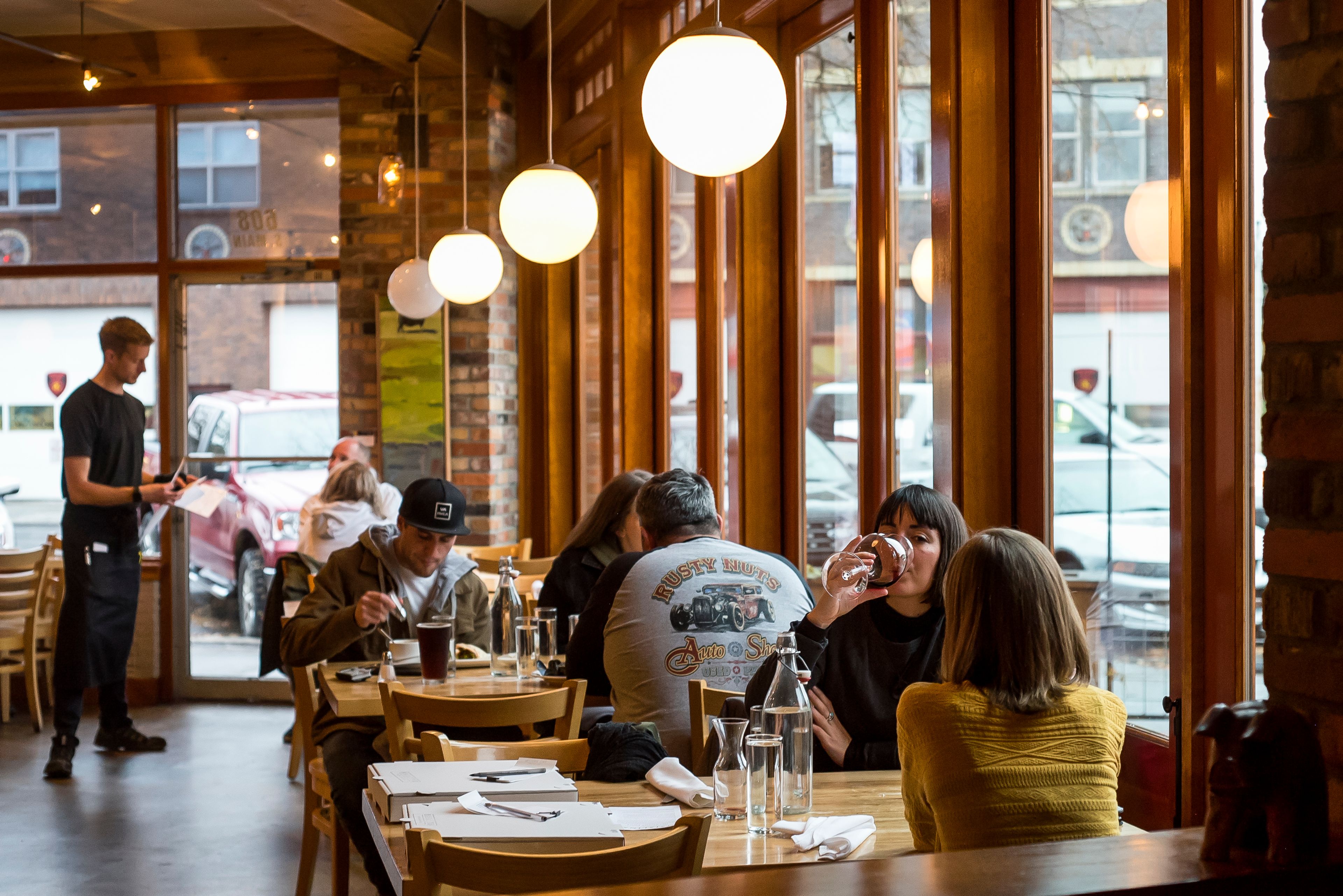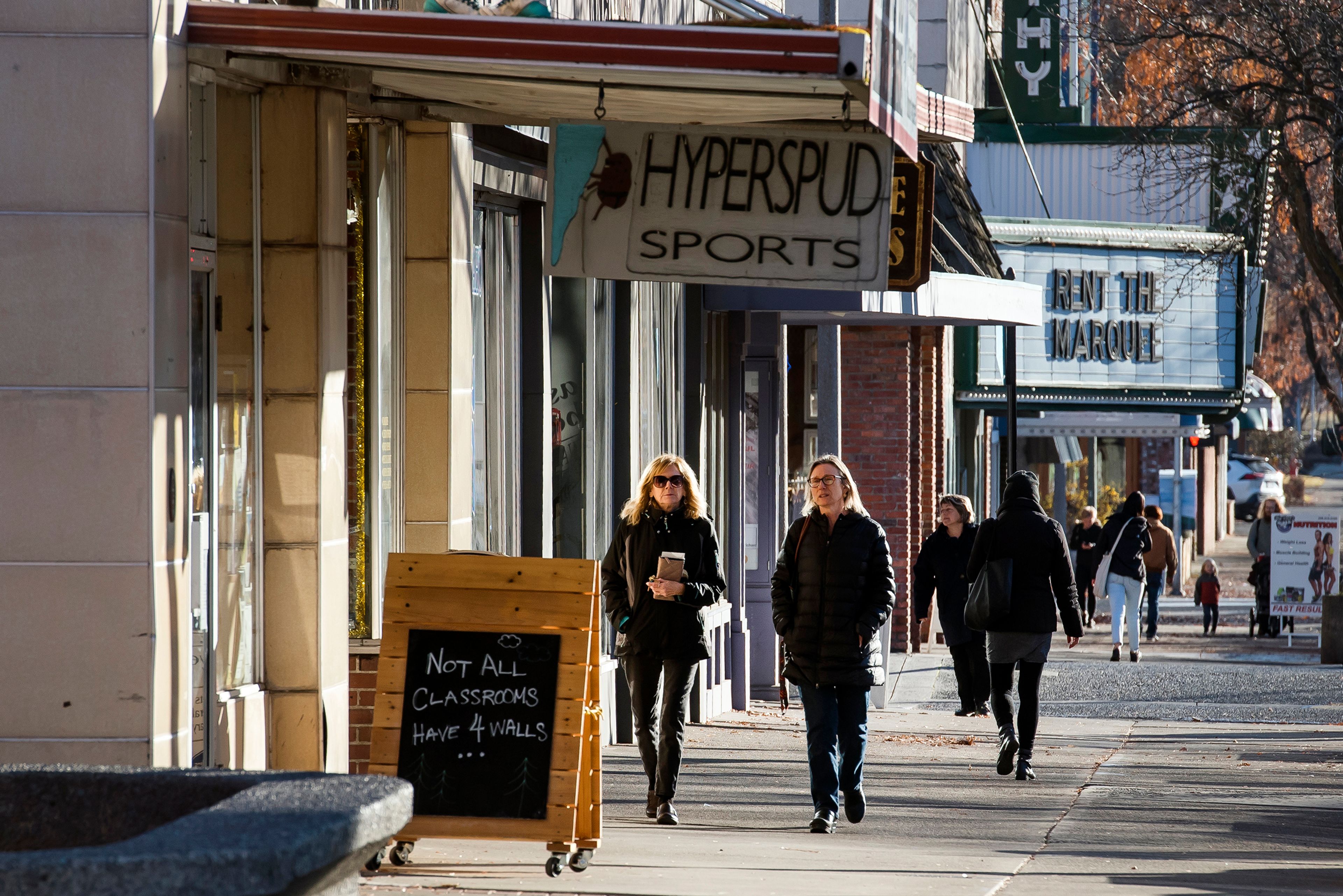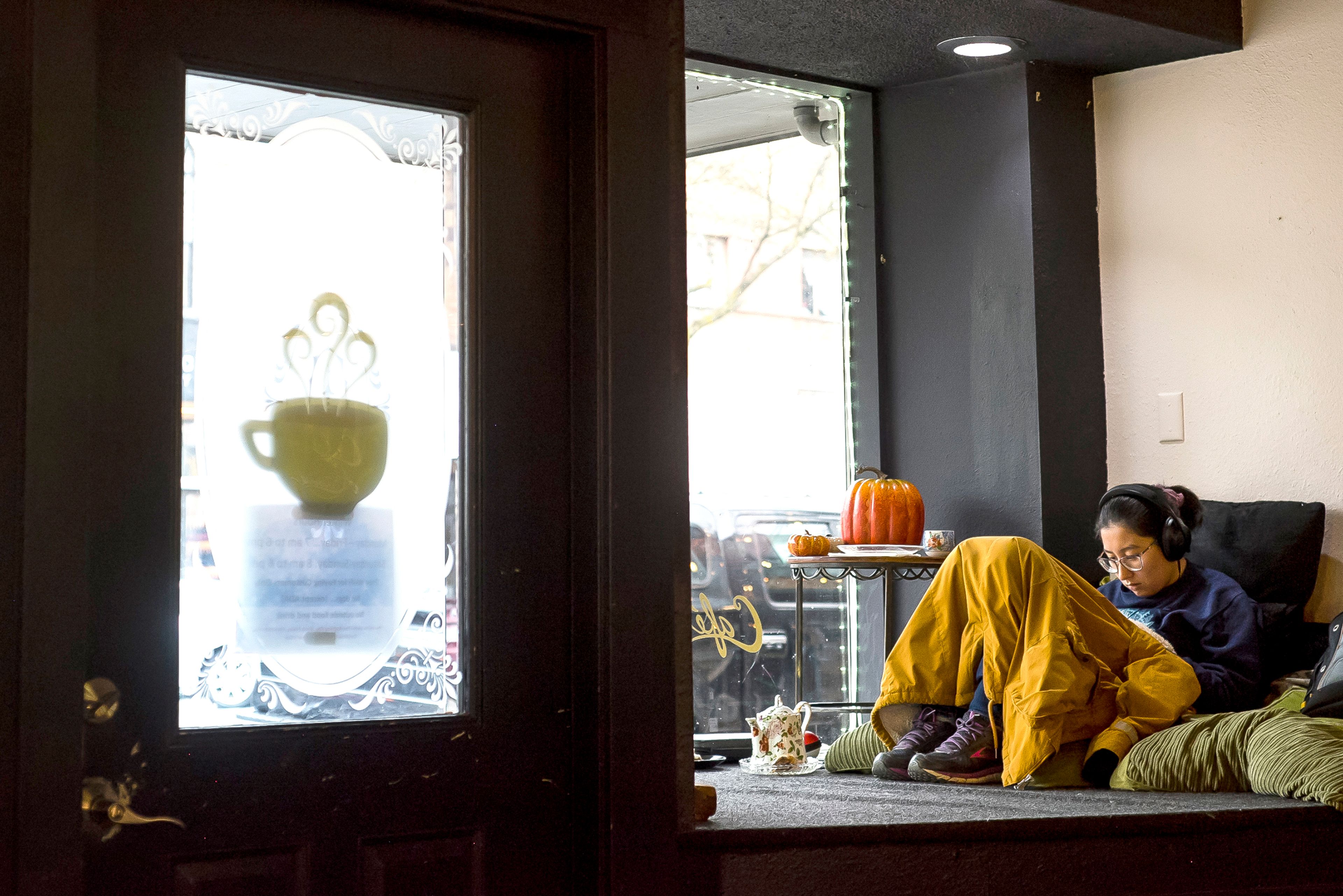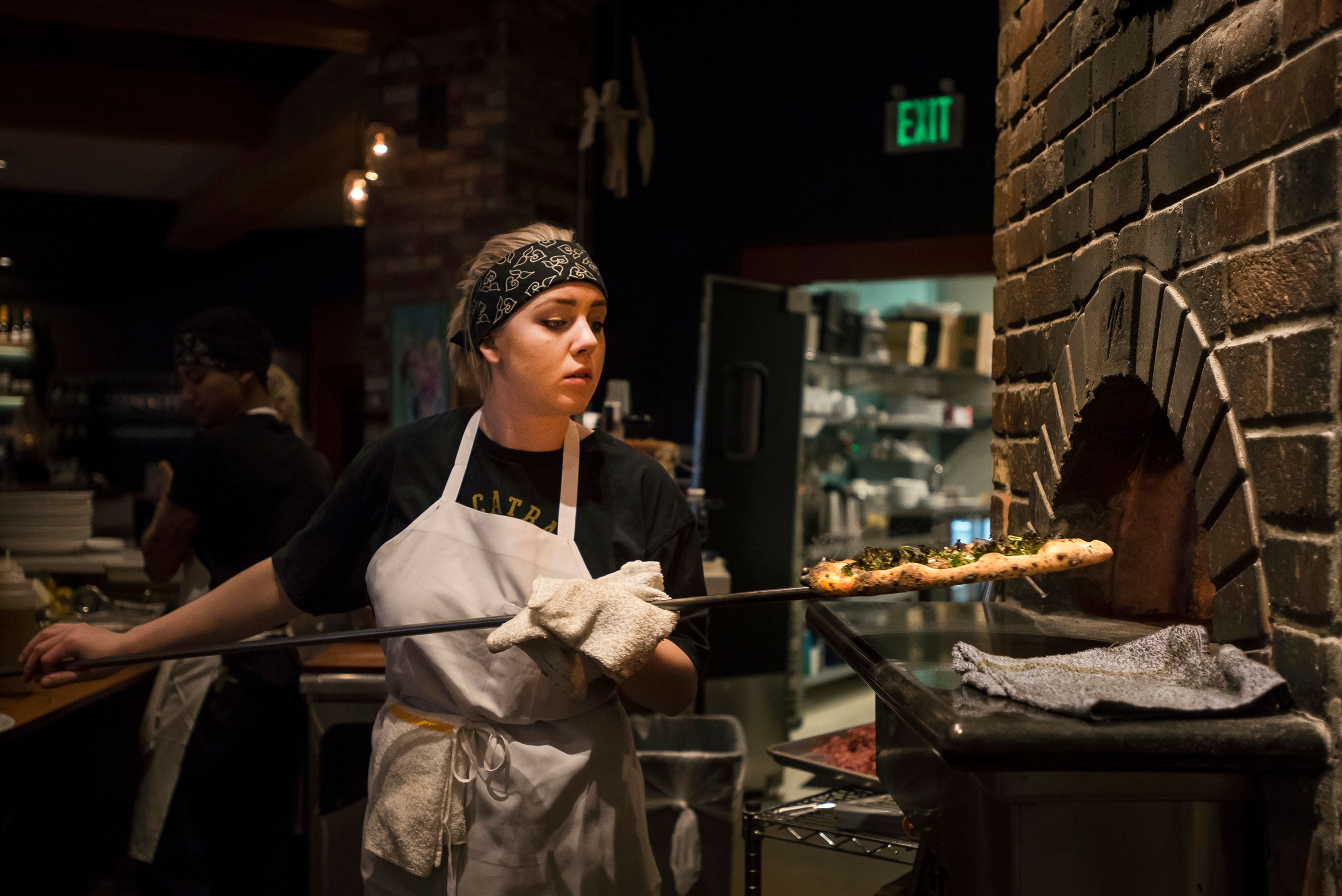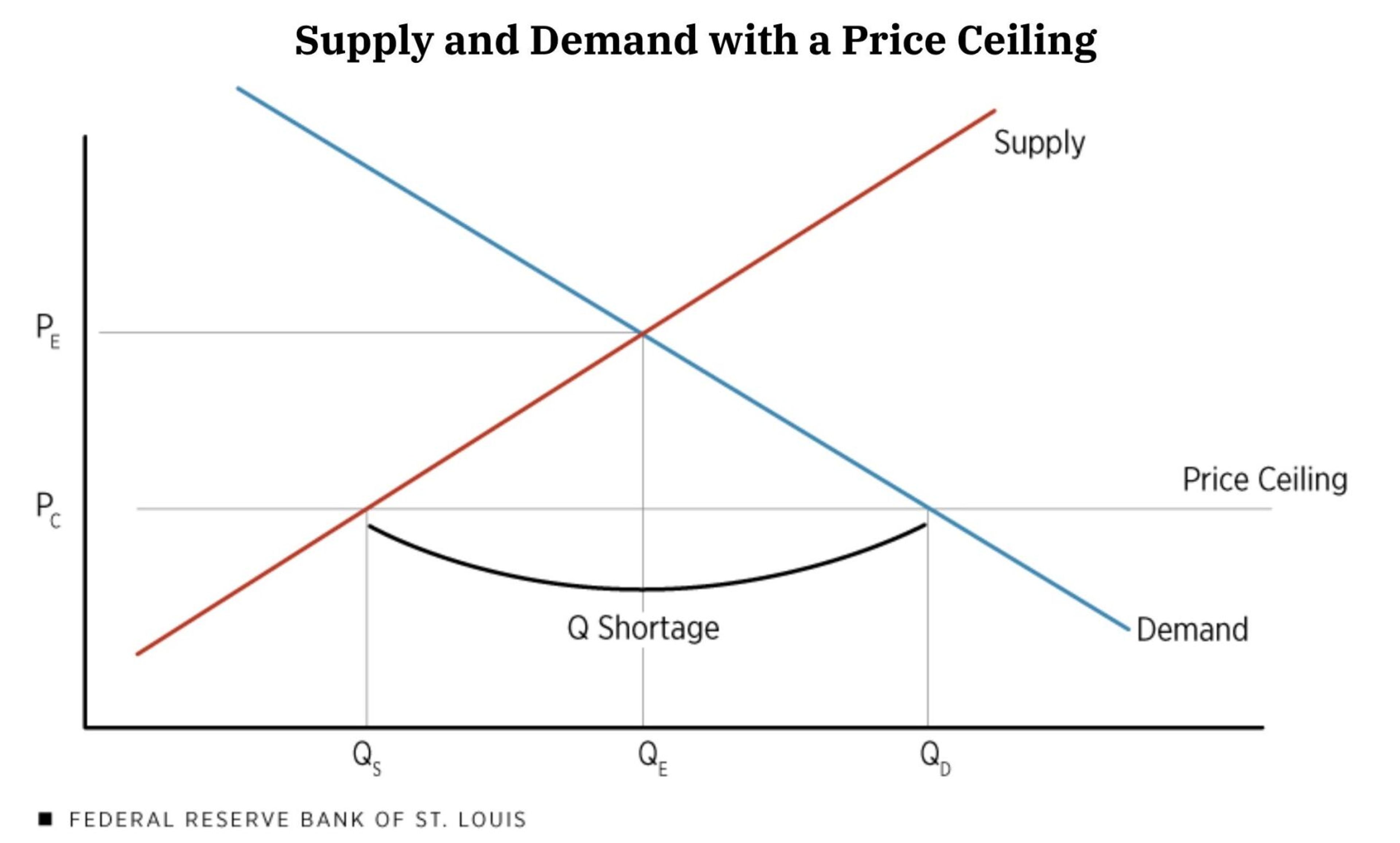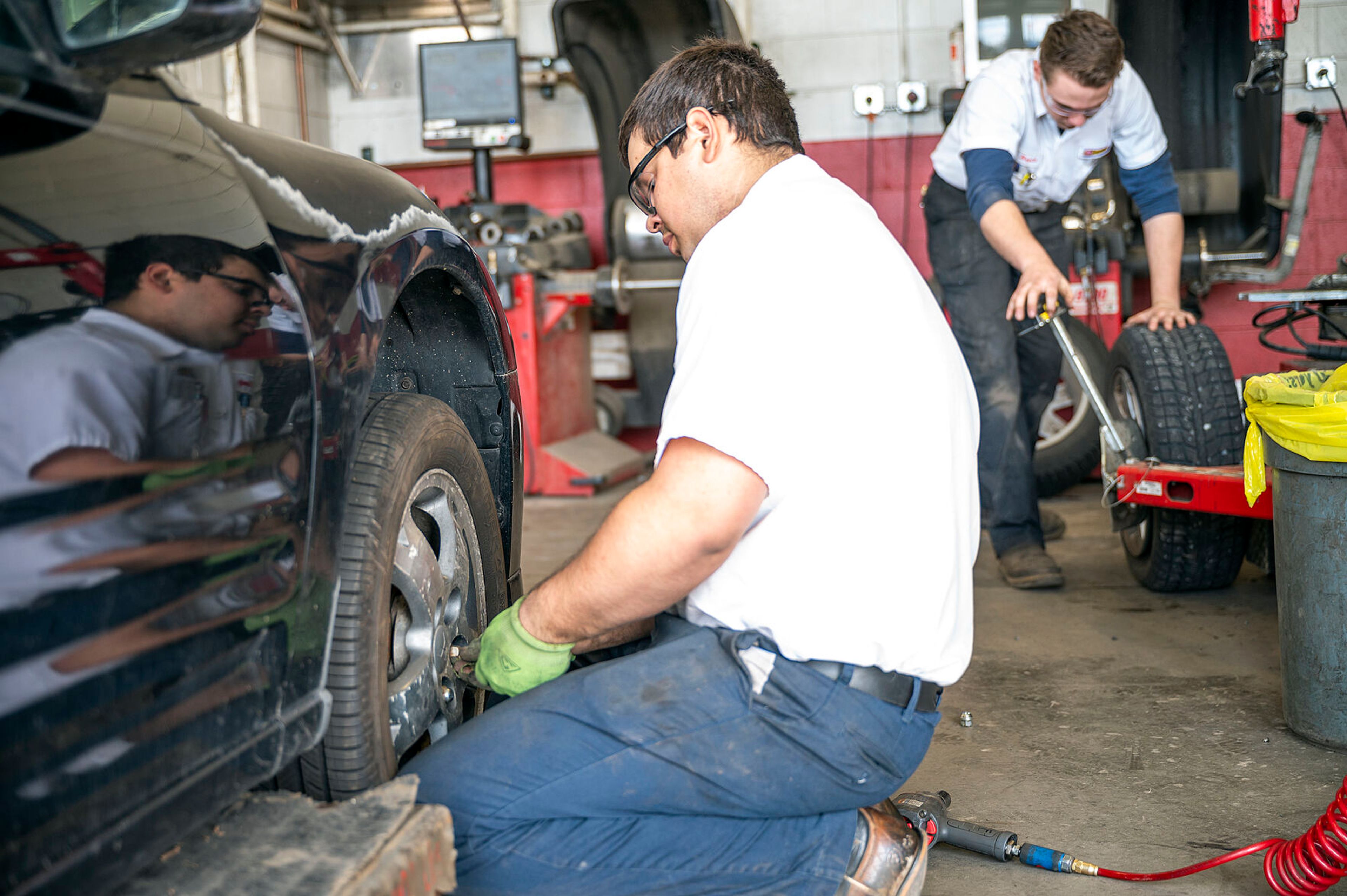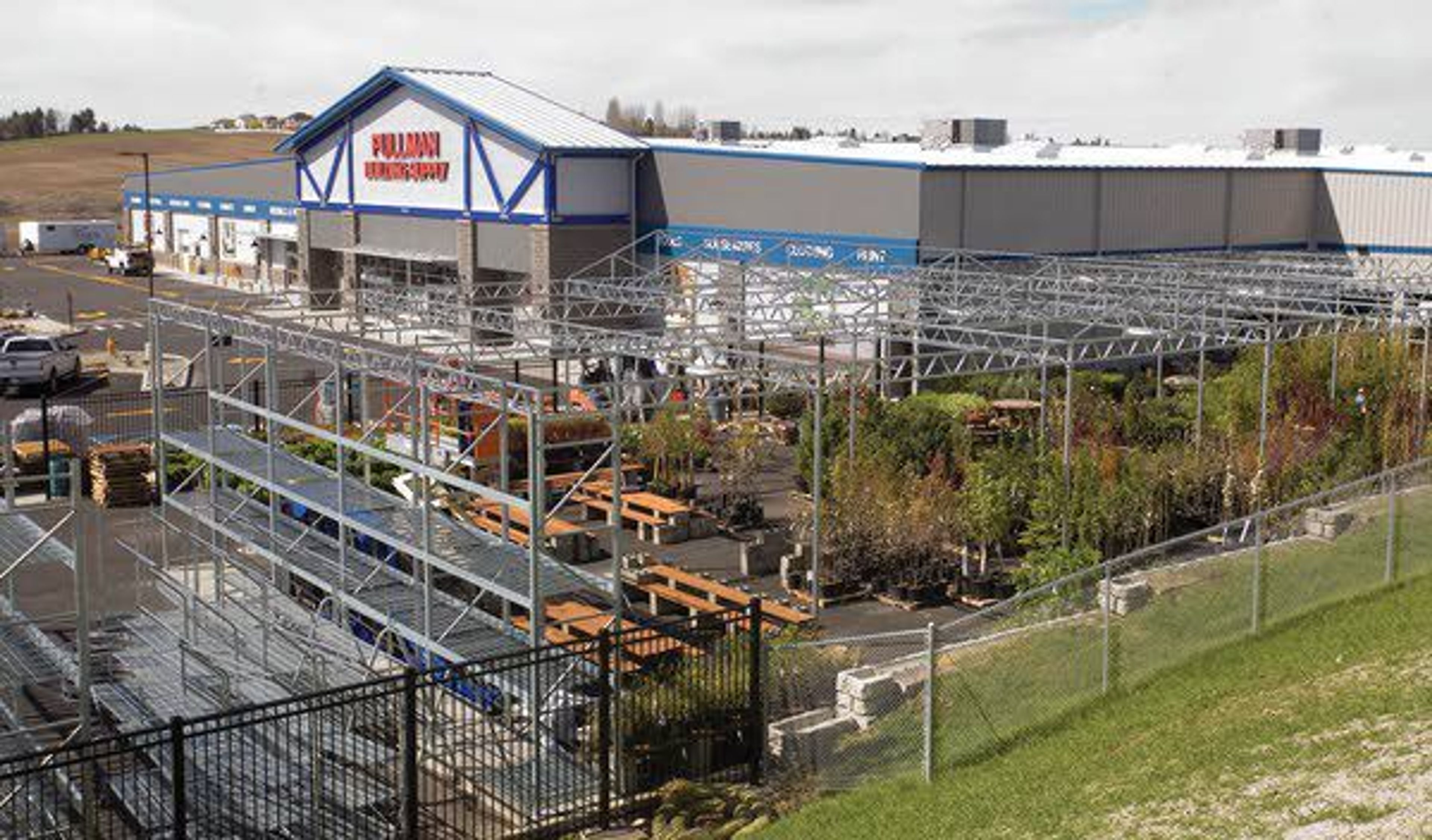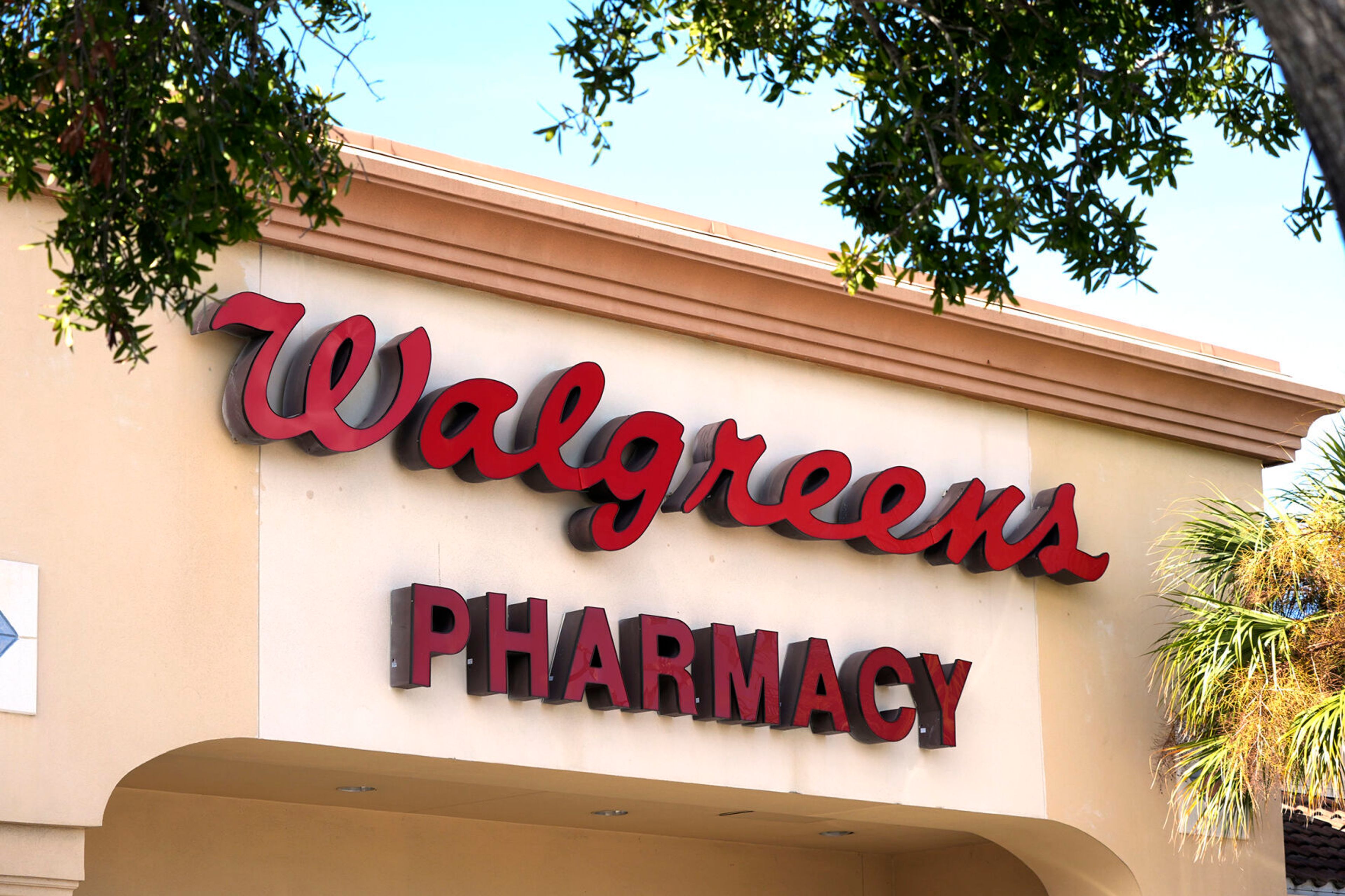Moscow’s downtown vibe years in the making
City’s thriving Main Street benefits from decision made four decades ago to make the area more people-friendly
When Ivar Nelson opened BookPeople on Moscow’s Main Street in 1973, he gained a level of exposure most new businesses only dream about.
There weren’t any malls in town then, so Main Street was the retail center of the community. U.S. Highway 95 also ran straight through downtown, bringing thousands of cars and trucks past his shop every day.
But a highway jammed with vehicles — even ones full of potential customers — wasn’t what Nelson and other community members envisioned for the downtown corridor. They wanted something more inviting, more people-friendly.
“My building would shake every time the log trucks drove by,” Nelson recalled. “We needed to do something.”
After lengthy efforts, a “one-way couplet” alternative was eventually constructed, steering most through traffic onto Jackson and Washington streets. At the same time, several streetscape improvements were made on Main Street, including replacing sidewalks, adding crosswalks and installing playground equipment in Friendship Square.
“We were part of a general humanization of development,” Nelson said. “We really wanted to focus on people.”
Nearly 40 years later, many of the qualities that make downtown Moscow the most successful core business district in the Quad Cities region can be traced back to that one decision. Had the highway traffic not been diverted, Nelson said, Main Street wouldn’t be the healthy, vibrant gathering place it is today.
“It wouldn’t be a success,” he said. “Not just because of the cars, but because it would reflect the attitude that we have to design spaces for cars and trucks, rather than for people.”
As Pullman and Lewiston embark on their own downtown revitalization efforts, this people-first attitude is one of the main messages for Seattle consultant Brian Scott.
Scott, the founder of BDS Planning and Urban Design, is working with both communities on their downtown master plans. Lewiston’s plan was approved earlier this year; Pullman’s is slated for completion in February.
During a community meeting in Pullman in October, Scott suggested some of the “excess” traffic capacity on Main and Paradise streets could be converted into bike lanes, landscaped mini-plazas or other pedestrian spaces.
The goal, he said, is to create a “lively and successful” core business district that puts people at the forefront.
“The key is to focus on downtown being for people, and to manage parking (and traffic) to support that,” Scott said. “The main thing is putting people first.”
The value proposition
The changes in downtown Moscow were driven in part by the increasing traffic counts on Main, as well as by construction of the Palouse Mall and Eastside Marketplace in the late ’70s.
“We had two large shopping centers under construction at the edges of the community,” said Moscow Community Development Director Bill Belknap. “They were a threat to downtown. There was a lot of concern.”
The state paid for the one-way couplet construction, but the Main Street improvements were funded through a local improvement district that taxed property owners in the area.
Concurrent with the streetscape work and highway improvements, Belknap said, the city addressed the downtown parking situation. Angled parking was added, parking meters removed and off-street lots were built.
“We had an active downtown business association at the time,” he said. “They had acquired some property (on Jackson Street), so the city took that over and constructed a parking lot.”Nelson, together with Moscow Hotel owner Bill Bode and architect Ron Wells, also organized an independent “Third and Main” visioning process, which gave downtown property owners and community members an opportunity to discuss what they wanted for the future.
“We wanted to focus on values: What were the values that should be reflected in our public gathering places?” Nelson said. “And one of the agreed-upon values was that downtown should be the center of the community. Now, 38 years later, malls are going away, and we still have a strong downtown.”
This community involvement, he believes, gave Main Street the flexibility to change with the times, evolving from a retail center to a major entertainment district.
“Our success was based on being in tune with the community,” Nelson said. “Whatever you call the process — downtown revitalization or whatever — it has to reflect the values of the community.”
The master planning process in Pullman and Lewiston is also an attempt to craft a community vision for the downtown core.
Pullman’s revitalization work, for example, stems from the Town-Gown Collaborative, a cooperative effort involving the city and Washington State University that recently led to the formation of the Downtown Pullman Association.
“With the high level of interest from the university, the city, Schweitzer Engineering (Laboratories) and a reorganized downtown group, it feels like it’s Pullman’s time,” Scott said.
Eat, drink and be merry
Other factors contributing to the success of Moscow’s core business district include the Moscow Food Co-op, Moscow Farmers Market and a multitude of historic buildings. The town’s favorable geography makes it much more walkable as well, compared to parts of Lewiston or Pullman.
In recent years, however, the community has turned away from other common revitalization strategies. For example, it no longer has a special taxing district to raise funds for downtown improvements. Nor are there substantial tax incentives for redevelopment or new construction, and the downtown association is no longer active.
“I think (the association) was seen as being one more layer of bureaucracy, one more thing separating business owners from the community. That doomed it,” said Gina Taruscio, executive director of the Partnership for Economic Prosperity, an economic development group.
Taruscio is former director of the Moscow Chamber of Commerce and a current member of the Moscow City Council. Both groups, she noted, handle some of the functions a downtown association would typically pick up, such as marketing and event coordination.
Overall, though, she sees the vitality of downtown Moscow as a reflection of the community as a whole, rather than any specific programs or activities.
“I can’t pin it on any one thing, other than it matters to us,” Taruscio said. “It’s part of our culture and expectations. It’s a reflection of the inclusiveness Moscow has at its base.”
Local chef and restaurateur George Skandalos agreed with that assessment.
“Sometimes it just takes people pulling together, and that’s what we have in Moscow,” he said.
While people often refer to downtown as being the living room of Moscow, Skandalos sees it more as the kitchen. It’s the place, he said, where people gather to drink, socialize and enjoy good food.
He and his business partner, Carly Lilly, have contributed to that atmosphere. They opened Sangria Grille in 2004, followed nine years later by Maialina Pizzeria Napoletana.
They’ve made other investments as well. Last year, they acquired the Moscow Hotel, and just a few weeks ago they purchased the former U.S. Bank building at Third and Main.
“We’ll take out the (ground floor) parking and enclose that space,” Skandalos said. “We’ll put Sangria Grille on the main floor, with office space on the second floor.”
While he supports increased residential and commercial uses in the core business district, Skandalos thinks the concentration of eating and drinking establishments is one of the key factors in Main Street’s success.
“There are now 31 restaurants, bars and coffee shops (on Main) between Sixth and Third,” he said. “We are the dining destination of the Quad Cities.”
That reputation has sparked increased investment and redevelopment north of Third Street over the past five years, with the addition of such eateries as Tapped, Lodgepole, Humble Burger and Colter’s Creek Winery tasting room. Colter’s Creek also is looking at adding a boutique hotel to its downtown location.
Straying too far from that entertainment mix, Skandalos said, would undermine Main Street’s future.
“The worst thing that could happen would be to have a lot more nonretail, nonfood businesses locate downtown,” he said. “I can’t hammer that point hard enough.”
Moving forward
There seems to be general consensus on that point.
Earlier this year, for example, the Moscow City Council prohibited any more educational institutions from locating or expanding within the Central Business Zoning District.
The decision, which was supported by more than 60 percent of respondents to a community survey, stemmed from a 2017 expansion proposal by New Saint Andrews College.
New Saint Andrews moved into the former GTE building at Friendship Square in 2006, with room for 200 students. The 2017 plan, which was approved, allows it to add as much as 300 more students at the former CJ’s nightclub on North Main.
Although concerns are occasionally raised about its impact on downtown parking, Mayor Bill Lambert and local Realtor Shelley Bennett both credit New Saint Andrews with contributing to the Main Street economy.
“The GTE building was vacant for three or four years before they came along and bought it,” Lambert said. “I think that helped.”
Bennett, who has worked in commercial real estate the past 25 years, said the addition of 200 faculty and students was a shot in the arm for local businesses.
The downtown core was “stagnant” for years and years, she said, until after the 2007-09 recession. Businesses would come and go, but there weren’t enough customers to go around — until New Saint Andrews opened.
“That really helped move things forward,” Bennett said. “Having people downtown makes the difference. If we had a whole bunch more nonretail businesses, that would hurt downtown. But (the expansion at software development company) Emsi and a few hundred more students at New Saint Andrews will keep it strong.”
Belknap, the community development director, also noted the proximity of city and county government offices, as well as Moscow High School.
“They provide a lot of stable employment and draw people downtown,” he said.
Nevertheless, Moscow officials aren’t resting on past successes.
“The city did somethings in the ’70s and ’80s, and we continue to reap the benefits of that,” Belknap said. “But downtown is beginning to show its age, so we’re starting to have some conversations about that. What do we want the next 40 years to look like?”
As part of that effort, he said, the council recently approved funding for a downtown parking study. The city also plans to hire a consultant to look at the next-generation streetscape improvements, while replacing aging sidewalks and street fixtures.
“If you look at Main Street as a multipurpose event space, right now we don’t necessarily have the infrastructure to support that,” Belknap said. “So how do we reconstruct it to be supportive of that?”
For example, there’s already been conversations about elevating the roadway at intersections to curb height, to provide a type of mini-stage or platform for bands. The street lighting could also be upgraded to be more supportive of such events.
“I think from most people’s perspective, downtown Moscow is very successful,” Belknap said. “We want it to be as good as it can be, so we’ll continue to make those investments, to the best of our ability. At the end of the day, the community has a lot at stake in this.”
Although Nelson sold his Main Street bookstore in 1981, he remained active in the downtown revival. He’s currently part of the group that’s restoring the Kenworthy Performing Arts Centre.
Like the town itself, though, he also keeps a wary eye on the future.
“I think the Palouse is incredibly well-positioned for substantial growth, and we need to prepare for that,” he said. “And I see Moscow and Pullman together as the Palouse. People who insist on seeing them as two separate communities, that’s not planning for the next generation.”
William L. Spence may be contacted at bspence@lmtribune.com or (208) 791-9168.
